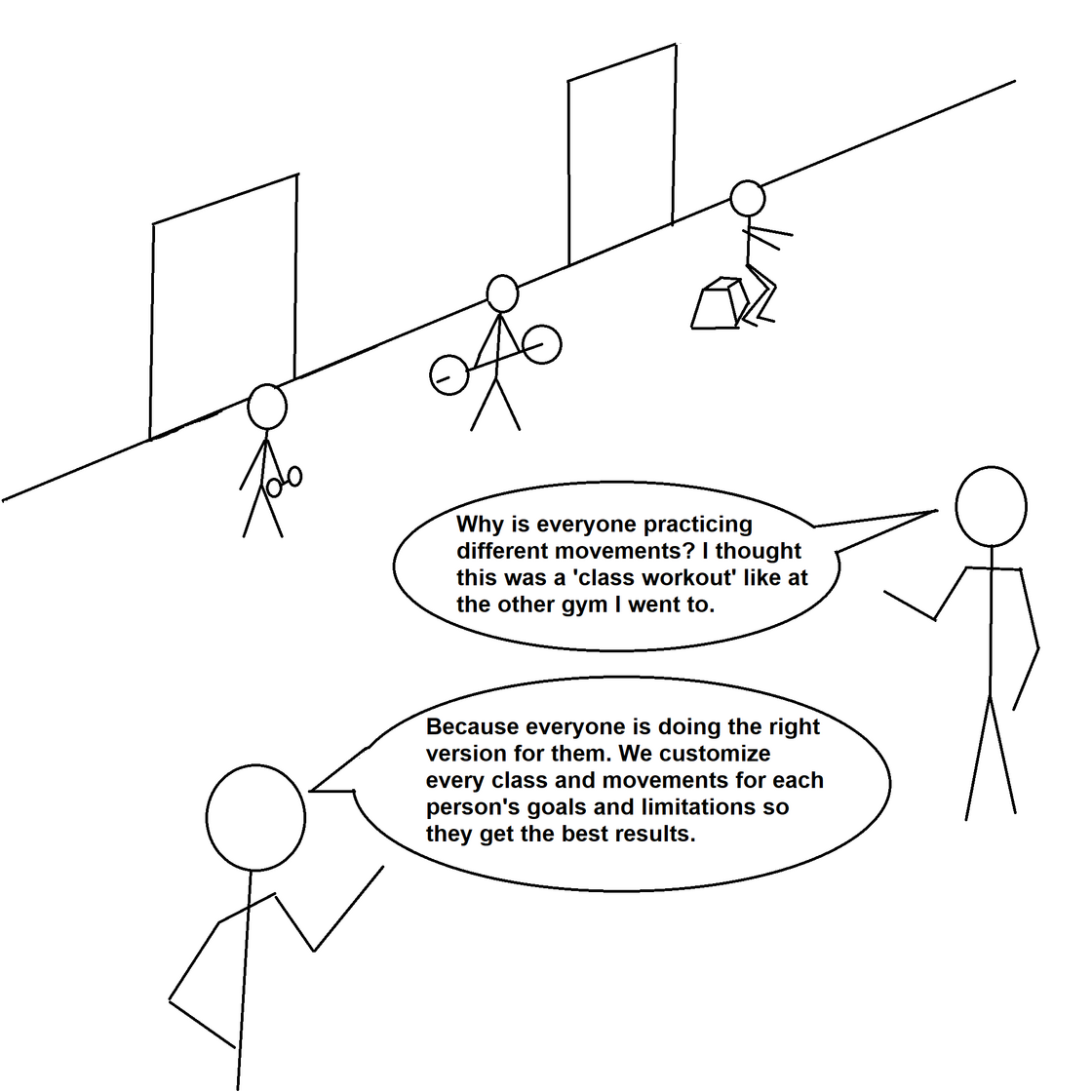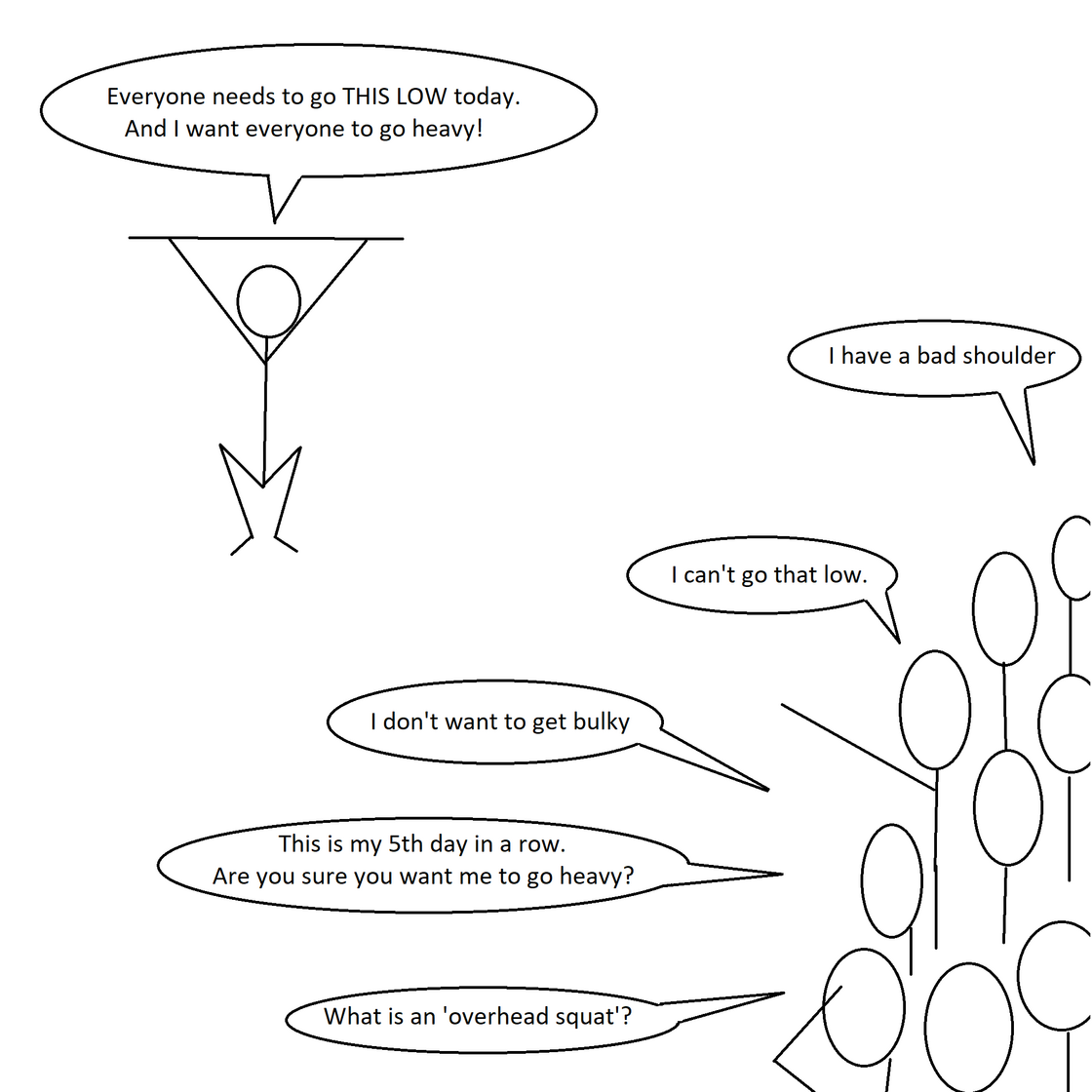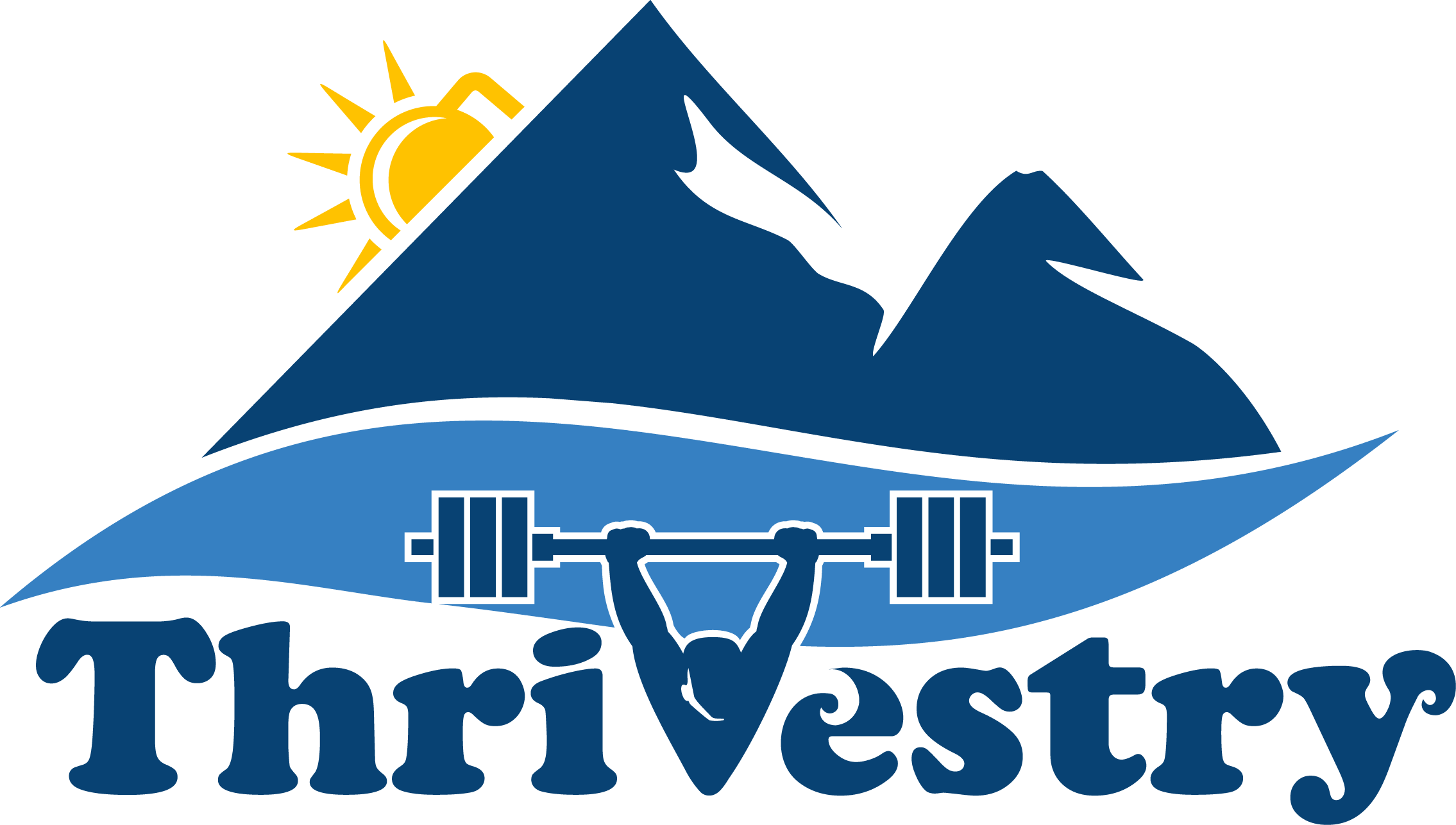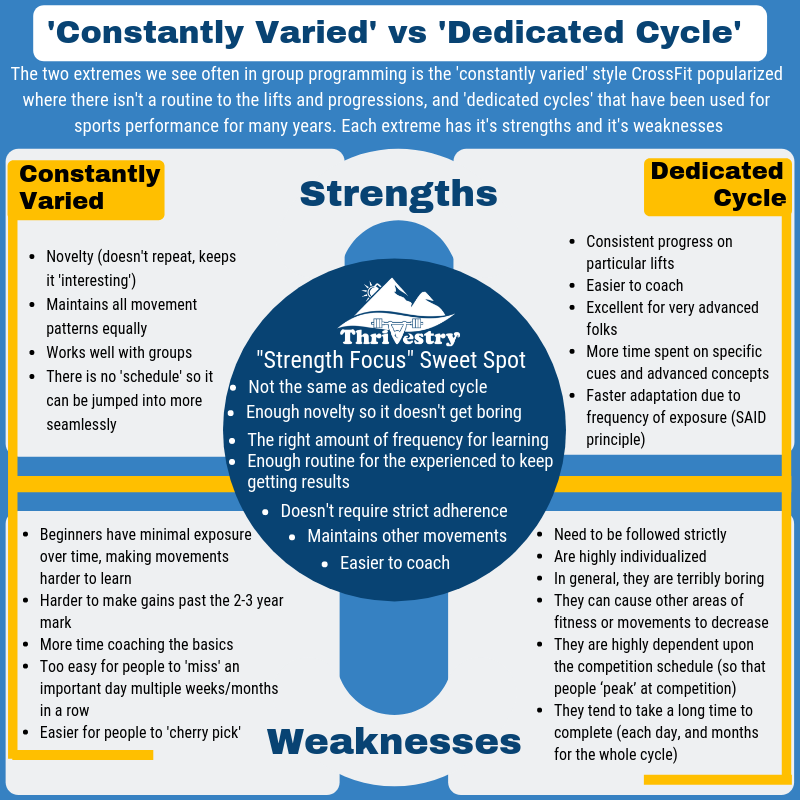Customizing the Programming for Individual Clients
Every person that steps into one of your classes should be getting a unique training day according to their abilities and goals.

Starting with the approach to the context, how they perform the warm up, what skills and progressions they do, the mobility, what weights they lift, how they modify the workout, and if they do the cash out/hypertrophy…
There is a reason why the daily lesson plans fill up an entire page of text. It is to make sure everyone has plenty of options for customization for the best results!
As coaches become more experienced, this becomes automatic. We can see how someone is moving in the warm up and know immediately what progression they should be using for the workout (without even ‘knowing’ the person).
When we work with the same people in class over time, we can give even more poignant advice that will help them have a better experience that day AND help them outside of the gym. If we do our jobs well, the majority of clients will start to learn themselves what is best, and they will need less guidance on a regular basis (unless their situation or goals change). This is one of the benefits of having clients for 5-10 years or more. They know what to do for most things!

That said, I am a huge proponent of working with clients on a one on one basis regularly to create more accountability and to be able to ‘dig deeper’ into what is going to get them their progress the fastest.
Side Note: When a gym is small (40-80 members) it is natural to have one on one conversations with clients and help them individually. As the gym grows, this ‘high touch’ level of interactions starts to drop off. This is one of the primary reasons for ‘churn’ (clients coming and going). To combat this, I believe that it is best to have everyone on a ‘hybrid’ membership (a combination of one on one and group class training). Having a sit down conversation to go over goals and tactics once a quarter or every 6 weeks is one of the most powerful tools to keep people progressing for decades (and to keep the relationship strong).
The problem is that most gyms don’t start this way, and it can be hard to ‘convert’ your long-term members to seeing the importance of these meetings. They do not realize that you were doing it (for free) before and,when the gym grows, you won’t be able to afford that level of service. You need to formalize this service as early as possible by including it in your pricing so you aren’t stuck trying to add it on later when you have many more clients.
I wish I could say it is as easy as raising rates (4 one hour sessions per year at $60 would add $20 per month to their membership. With 100 clients, it means an extra $2,000 per month in revenue!). But the implementation of this is tricky. Showing the value to clients that have been around a while, scheduling all of those sessions, knowing what to talk about each meeting… it is not a simple process. That is why I recommend everyone talk to the MadLab Group about how to get this set up in your gym!
Whether you have a structure for regular PTs or not, there will still be clients that need some extra attention. This could be due to an injury, because they are traveling, or their goals have changed (like they just got pregnant or have a high school reunion coming up), etc.
This provides an opportunity for customized programming!
Side Note: If their situation is very unique, you may have to build their program from scratch. That is not what I am going to be talking about today. I will say that if you decide to take this on, make sure you are charging a proper amount for the time you will be putting in. Market rates are usually about $100-150 per month on top of the regular membership (it is expected you’ll be doing about an hour a week of work, and having regular one on ones).
Modifying Existing Programming – More Bang for your Buck!
Today we are going to focus on modifying the existing programming. This is a service you can offer for much less than building the program from scratch, provide great results, AND possibly save a client that was just about to put their membership on hold!
I recommend charging $40-$60 per month for this added service, but you may want to charge some other way (like week to week). This assumes you’ll do at least one meeting at the beginning and doing 1-2 hours of work per month on the programming side (that time will also include the time you will be communicating with them). Additional one on one sessions can be charged as they are booked (but if someone pays you for 6 months, you may want to include one with the monthly fee). Ask for a 3-month commitment unless there is a good reason for it to be less (like they are only going to have a busy schedule for 2 months).
Benefits of having them do modified programming over completely custom programming
- They will be able to jump in and out of the classes seamlessly
- It takes much less time (so you can charge less and help more people)
- They won’t feel ‘alone’ and they can still workout with their friends or compare scores online
Abby and Burt Need Some Special Help
We are going to walk through two examples that we commonly see: a person with an injured arm or shoulder, and a person that can’t make it into the gym (due to schedule or traveling).
In the videos below, I am going to take a week’s worth of programming and modify it for each person. One video I will use the Word version of the programming and the other I will use the Summary format in a spreadsheet.
You’ll start by finding out:
- What their goals are (find their ‘pain’ or their ‘why’ so you can refer back to it constantly)
- What are their limitations (physical, time, equipment, etc.)
- What is their training schedule
Save these notes in a file so you can refer to them each time you work on the programming. You should also save notes and communications with them here as well, so you are always up to speed on what is going on with them. I am a big fan of Trello if you are tracking a ton of clients! (Here is an example of Trello for tracking a lot of clients in the gym)
Abby
Abby has been training for just over 6 months. Her primary goals are to lean out and be able to hike and snowboard. She trains 3-4 times per week, has learned a lot of the movements, and is making progress. She just injured her shoulder and is worried that she won’t be able to come to class and lose all of her gains.
Burt
Burt has been training for a few years. His primary goals are to look good with his shirt off (be ‘swole’) and to stay active as he gets older (he is in his late 40s). He was training 4 times per week, but his schedule has changed and he is having a hard time making it in. He is traveling a lot and with the kid’s schedule, he is lucky if he makes it into the gym once per week. He has DBs and a jump rope at home and at the hotels he frequents.
Send it
After you have modified the programming for them, send it out a week or so in advance so they can ask questions (but not more than a week at a time otherwise it is too easy to ‘blow off’). If you have time, add some overall notes and remember to refer back to their main purpose for training (their “why”) to keep them on point. Constantly remind them how far they have come (which is more motivational than always focusing on the long-term goal).
Accountability
A significant power of this service is the accountability piece. If you are only sending out the programming, and you aren’t having them send you results (or checking them regularly using an app like Beyond the Whiteboard and commenting), you will not have much success. Many people will fall off and not see progress.
Aim to have them send you results every time, or at least send a summary a couple times per week. Make sure you are responding with advice and encouragement.
Side Note: Most people will benefit from some extra nutritional accountability as well. A little can go a long way. Have them send you snap shots of their “My Fitness Pal” macros for a week or two and make adjustments. Ask what their plan is for the coming week nutrition-wise. Find the ‘low hanging fruit’ (like drinking soda all the time) and help them get some easy gains.
If this starts to become the main service, you may need to charge more or change the service from programming to nutritional guidance. Don’t let yourself get over burdened by trying to do both for the same price (and a lot more time and energy from you)!
Don’t Forget to Promote It
If people don’t know that you offer this, they won’t know to ask for it! Make sure you talk to people about it and have information online about it. Get testimonials from folks and celebrate their progress at the gym and online.
Some gyms have started to build up large client bases of people who only come into the gym once or twice a month and then do individualized programming. It opens up a whole client base that you may not have been able to serve before!
Don’t Be Afraid
I hope this helps you get over your apprehension of taking on customized programming clients. Remember that if you have questions, you can post to our private Facebook Group and get input on how to modify the program if you are stumped!
Thrive on.
-jj
Please share this if you found it useful or if you think it might help someone else.
Here are a few other things you may find interesting:
How Do I Talk To Clients who Want Longer Metcons
Coaches, ever wonder how to talk to people who are always asking for longer metcons? Check out our article with some tools and tricks to make sure these folks are still having an awesome experience.
One of Thrivestry's Secret Ingredients That Makes People More Awesome, the "Strength Focus"
CrossFit is known for being "constantly varied", but that doesn't mean random. Can we improve results, make the classes easier (to learn movements and to coach), while improving safety and ensuring that people make gains for more than 10 years?
Yes.
And we can do that by using what we call the "Strength Focus".



0 comments
Leave a comment